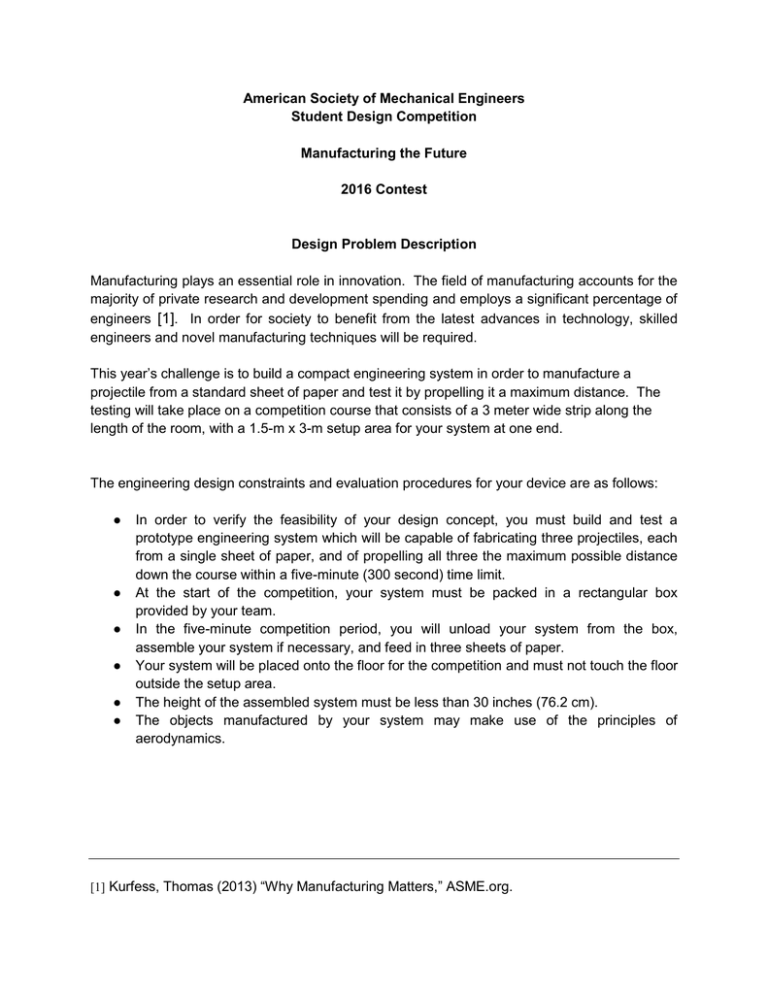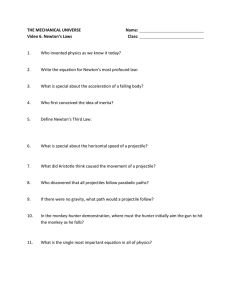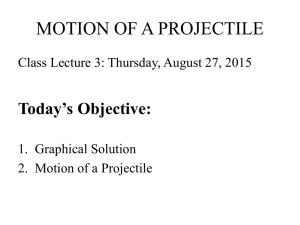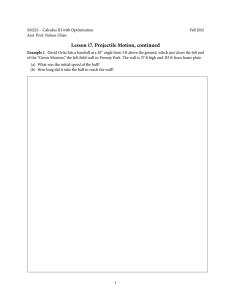ASME Student Design Competition
advertisement

American Society of Mechanical Engineers Student Design Competition Manufacturing the Future 2016 Contest Design Problem Description Manufacturing plays an essential role in innovation. The field of manufacturing accounts for the majority of private research and development spending and employs a significant percentage of engineers [1]. In order for society to benefit from the latest advances in technology, skilled engineers and novel manufacturing techniques will be required. This year’s challenge is to build a compact engineering system in order to manufacture a projectile from a standard sheet of paper and test it by propelling it a maximum distance. The testing will take place on a competition course that consists of a 3 meter wide strip along the length of the room, with a 1.5-m x 3-m setup area for your system at one end. The engineering design constraints and evaluation procedures for your device are as follows: ● ● ● ● ● ● In order to verify the feasibility of your design concept, you must build and test a prototype engineering system which will be capable of fabricating three projectiles, each from a single sheet of paper, and of propelling all three the maximum possible distance down the course within a five-minute (300 second) time limit. At the start of the competition, your system must be packed in a rectangular box provided by your team. In the five-minute competition period, you will unload your system from the box, assemble your system if necessary, and feed in three sheets of paper. Your system will be placed onto the floor for the competition and must not touch the floor outside the setup area. The height of the assembled system must be less than 30 inches (76.2 cm). The objects manufactured by your system may make use of the principles of aerodynamics. [1] Kurfess, Thomas (2013) “Why Manufacturing Matters,” ASME.org. Design Specifications: 1. Engineering systems are required to have zero on-board emissions. Your system must be powered by a battery or batteries. a) You may choose from any type of battery, but be sure to consider any transportation restrictions which may apply to the batteries and how it may affect your team’s travel to the regional and final competitions. b) You may use rechargeable batteries. c) Other stored energy sources (spring or other potential energy for example) are only allowed if these energy sources finish the competition at the same energy as they started the competition. 2. Your system must be designed to manufacture projectiles from single sheets of 20-lb, A4 paper. The paper may not be modified before manual loading, and your device may only fold or cut the paper -- no additional material can be added to the sheet of paper after it has been loaded into your device. 3. Your system must be designed such that the paper is manually loaded one sheet at a time, after the prior sheet has been launched. 4. With the exception of loading each sheet of paper, interfering with the operation of the system after the first sheet has been loaded will result in your team being disqualified. 5. The ceiling in the competition space may be as low as 8 feet (2.44 m) or higher depending on the competition location. Your system should be adjustable to accommodate this. 6. The distance traveled by each projectile will be measured as the distance along the 3-m wide strip to the point where the projectile first strikes the ground or any other object. a) If the projectile strikes the wall at the end of the competition space opposite of the setup area, the total length of the strip will be counted for the distance traveled. b) If the projectile lands outside the 3-m wide strip, the point where the projectile first strikes the ground or any other object will be used to determine the distance traveled. This distance will be measured by extending a line perpendicular to the strip from the point of impact. 7. The volume of the system will be measured based on the size of the rectangular box in which your system is initially packaged. You may construct a custom rectangular box but the volume will be calculated from the maximum length, maximum width, and maximum height dimensions of the box. Each team’s score will be calculated from the total distance traveled by the three projectiles and the volume of the box in which the system is initially packaged. Scoring is based on the following equation: where: ● distancen for n = 1, 2, 3 is the distance traveled by the nth paper projectile ● volume is the total measured volume of your system based on the inside dimensions of the box in which it is initially packaged ● dimensions will be measured in meters, the units of S will be m-2. Relevant Resources: ● Paper Airplane Building Machine: ○ https://www.youtube.com/watch?v=TDiIOTjyHzU ● Paper Airplane flight of 266 feet, 10 inches ○ https://www.youtube.com/watch?v=wedcZp07raE Room Arrangement: Room should be (i) as long as possible and (ii) have as high a ceiling as possible. There will be awards for the following: ● 1 place: Maximum Total Score (based solely on the previously stated S equation) ● Best Use of Advanced Manufacturing (optional for competitors; will be awarded at conference judges’ discretion) ○ A one page report is to be submitted by the team prior to the Student Professional Development Conference. Judges at each competition will provide specifics regarding submittal timing. The report will explain how the team used Advanced Manufacturing in the design of their system. ○ Judges will ask teams who have submitted reports any necessary clarifying questions during normal pre-judging period at the competition. ● Best Use of Predictive Design and Simulation Tools (optional for competitors; will be awarded at conference judges’ discretion) ○ A one page report is to be submitted by the team prior to the Student Professional Development Conference. Judges at each competition will provide specifics regarding submittal timing. The report will explain how the team used Predictive Design and Simulation Tools in the design of their system. ○ Judges will ask teams who have submitted reports any necessary clarifying questions during normal pre-judging period at the competition. st




